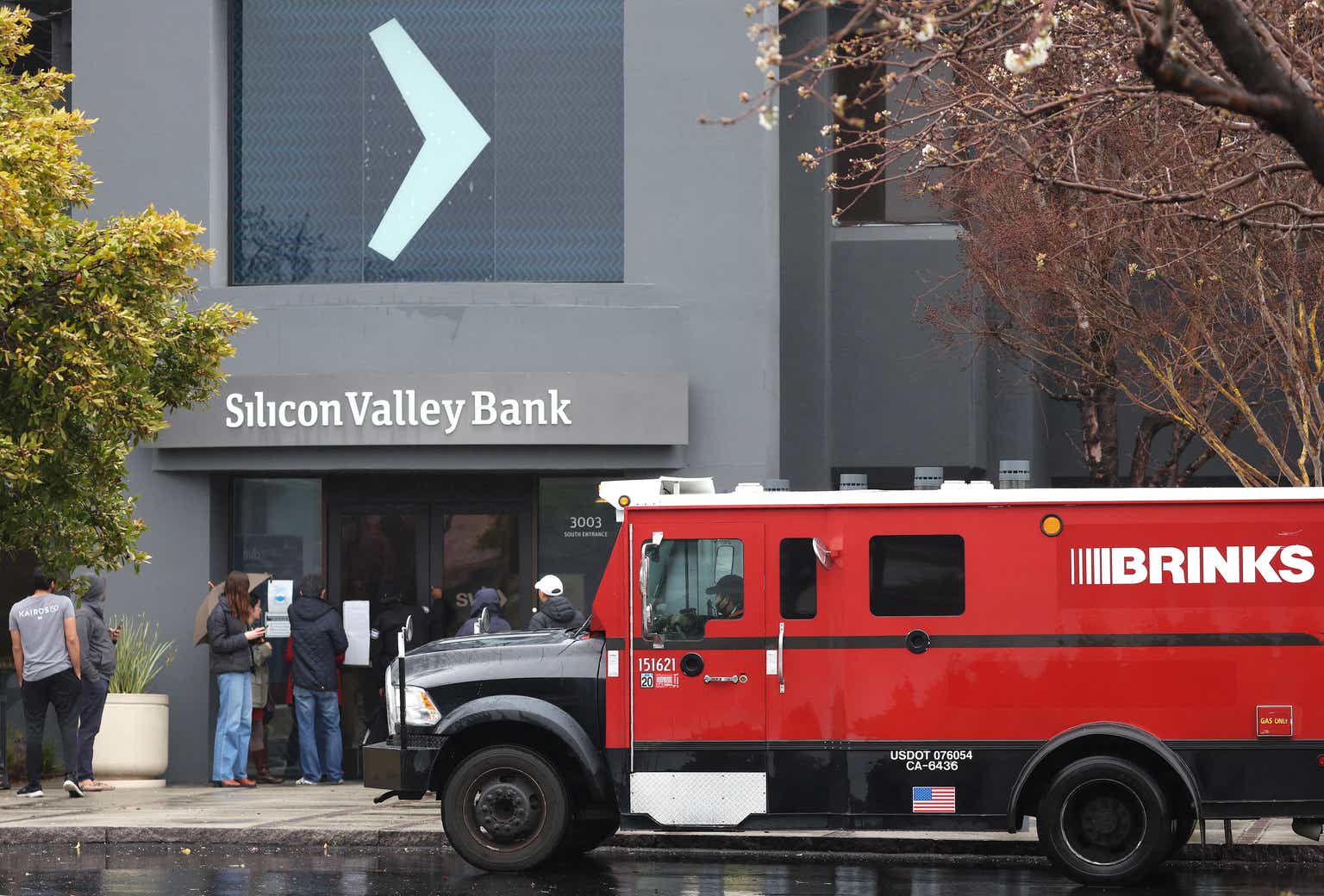Justin Sullivan
Crisis Porn
There is a certain financial type that relishes events like the financial crisis as though it were some vengeful god come to bring justice to the profligate and wicked. They are out in force this week with the twin implosions of Silvergate (SI) and Silicon Valley (SIVB) Banks.
As we saw in 2008, this does happen when the conditions are right. In that case, there was a giant asset class, private MBSs, whose risk had been systematically misrepresented by the banks that put them together, and the ratings agencies that blessed them. Almost everyone had these risky assets on their balance sheets (because of the AAA ratings), and they became impossible to price once the bottom fell out.
This is not that. In general, US chartered banks are very well capitalized, even in an environment where deposits are eroding.
The weekly commercial bank data from the Fed are the most up-to-date read on the banking sector we get. (Federal Reserve via FRED)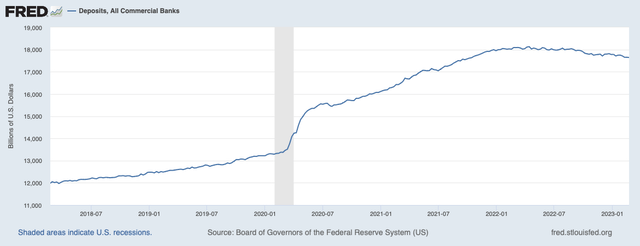
Silvergate and Silicon Valley Bank were small, unique cases, and the entire banking sector is not at risk. You would think it was:
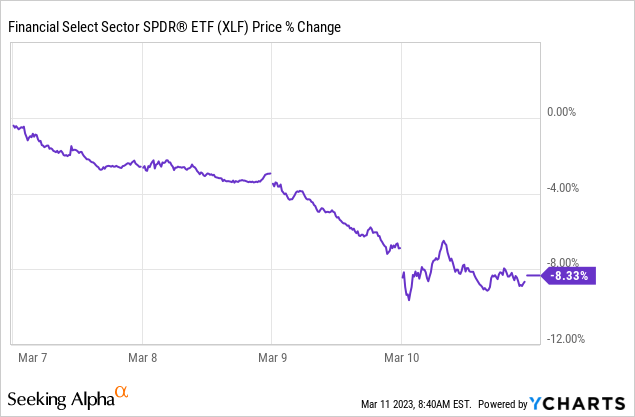
I bought a little XLF (NYSEARCA:XLF) Friday morning and will probably add to that. This is a huge overreaction. My weekend task is going through the list of US banks that are down 10% or more this week. Not including the two we are talking about, there are 119 of them. The US-chartered banking sector is still very flush, though not like they were in 2020-2021.
But no bank can survive a run.
Silvergate and Silicon Valley
Slivergate and Silicon Valley Bank were relatively small banks, though much larger than they were before the crypto and VC booms.
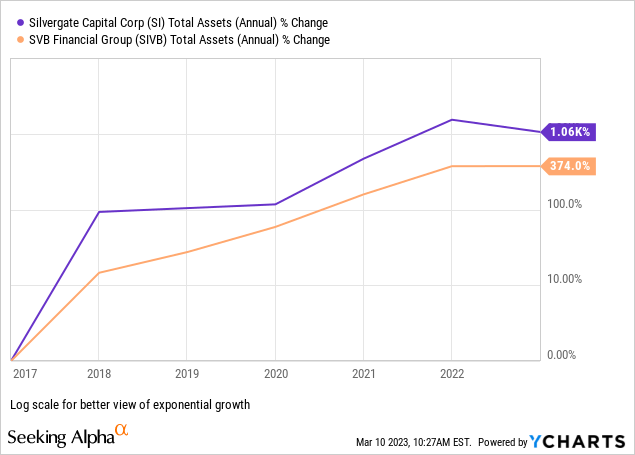
They are both niche banks with a lot of concentration risk:
- Slivergate was a very small local bank in Southern California, when somebody there struck on the bright idea of using their charter for crypto regulatory arbitrage, providing a link to the US banking system. They were a key link in the US crypto infrastructure, and the fact that they failed in a very boring and unspectacular manner takes one key crypto worry off my plate. (The other is Tether.)
- Silicon Valley Bank catered to Valley startups as the name implied. There is a herd mentality in the Valley, and many, if not most Valley startups would take their giant Sand Hill Road VC checks straight to SVB, which is why this happened in the past few years:
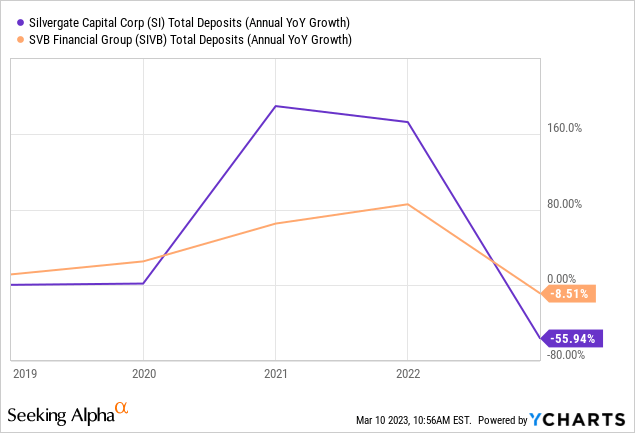
Deposits are a liability, what banks owe out, and they are banks’ primary liability:
Commercial bank deposits as a % of all liabilities. (Federal Reserve via FRED)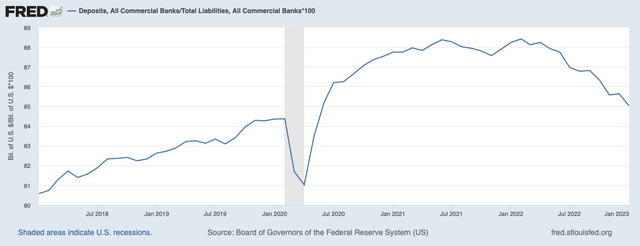
So these two niche banks grew rapidly on the backs of zero rates funding crypto and other startup investments, but that also became their weakness. Normally, you want to put these deposits into short-term debt securities, with terms ranging from overnight to 3 months. But in 2020-2021, when deposits were surging, rates were near zero on T-bills and other low-risk short-term debt.
3-month US Treasury yield 2020-2021 (Federal Reserve via FRED)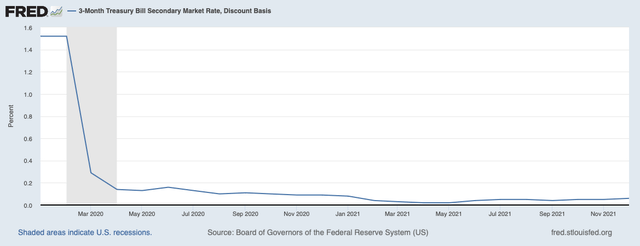
To put these deposits to work in 2020-2021, they had to extend their terms out. With rising rates, the value of those longer-term USTs and MBSs have taken steep haircuts. Any run on deposits requires selling these securities at a steep realized loss.
So, the similarities:
- Niche banks with lots of concentration risk.
- Very fast rising deposits in 2020-2021 when rates on AAA short-term debt securities were near zero.
- Declining deposits in 2022-2023, Silvergate much more so, and forced sales of low-yielding long-term debt with realized losses to go with it.
That’s where the similarities end. Silvergate was regulatory arbitrage, and eventually you have to exit an arbitrage. Again, that it is happening in an orderly fashion is hugely comforting, because they were really the one substantial link between the crypto world and the US banking system.
But Silicon Valley Bank is a much more interesting story, because it is really a case of pure animal spirits and very bad timing on the part of management. My read on their balance sheet is that they are built to withstand a large percentage of loan defaults, but not a run, because no bank can survive a run. They have a relatively small loan portfolio, about 35% of assets. Of that, 21% is riskier loans, with 9% being the riskiest to early and growth stage startups.
What tanked confidence, in my opinion:
Silicon Valley Bank’s deposit churn is cash coming in big chunks from VC investments, and going out from their customers burning cash. VC investment dried up after Q1 2022. Cash burn slowed, but kept going, so deposits eroded, though much more slowly than at Silvergate.
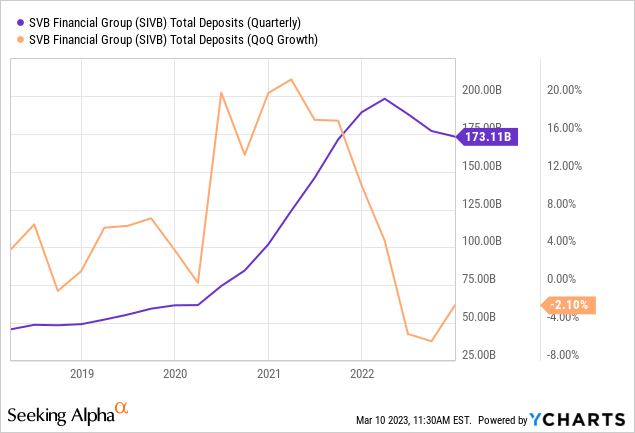
This forced them to recapitalize with a stock offering. But on the heels of Silvergate announcing that they were closing up shop just hours before led to several VCs, including Peter Thiel, advising their companies to withdraw deposits. The stock crashed and the recap failed. From a filing by the California regulator that shut them down:
Despite the bank being in sound financial condition prior to March 9, 2023, investors and depositors reacted by initiating withdrawals of $42 billion in deposits from the Bank on March 9, 2023, causing a run on the Bank. As of the close of business on March 9, the bank had a negative cash balance of approximately $958 million. Despite attempts from the Bank, with the assistance of regulators, to transfer collateral from various sources, the Bank did not meet its cash letter with the Federal Reserve. The precipitous deposit withdrawal has caused the Bank to be incapable of paying its obligations as they come due, and the bank is now insolvent. [emphasis added]
It is unclear how much, if any, of that $42 billion was part of Silicon Valley Bank’s substantial off-balance sheet deposits. These are money market funds and similar, where Silicon Valley Bank acts as a pass-through, and the deposit is on someone else’s balance sheet. But in any event, my read is that they could have gotten about $60 billion from the Fed via their repo facility and the discount window. This week’s Fed balance sheet promises to be very interesting when it comes out, because many will be hitting up those two facilities on Monday.
My read on Silicon Valley Bank is that they understood they were in a high risk banking sector, and their balance sheet reflected that. They had regulatory capital ratios well in excess of their minimums and competitors. They could handle large losses in that 21% of their loan portfolio that was risky. But they could not handle a run on deposits, because no bank can.
The Banking Sector Is Still Solid
My favorite way to make money in the market is to find a great long-term story and sit on it for 5-10 years. That’s the foundation of Long View Capital.
My second favorite way is Fear Arbitrage. There is definitely fear right now:
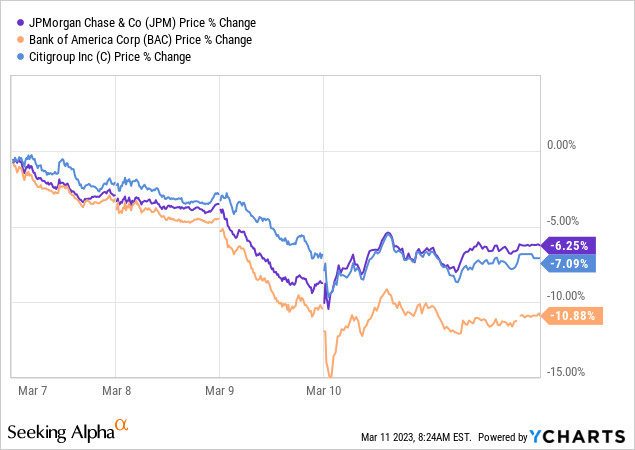
Silvergate and Silicon Valley Bank are insolvent now, but the US-chartered banking sector is not. Keep in mind that a run on one bank means more deposits for someone else. There are no companies withdrawing their money from Silicon Valley Bank and putting the cash under a mattress, or buying physical gold or bitcoin.
While not as low as 2021, bank leverage remains historically low:
All deposits divided by cash assets plus total federal funds sold and reverse repo (Federal Reserve weekly commercial bank balance sheets Table H.8)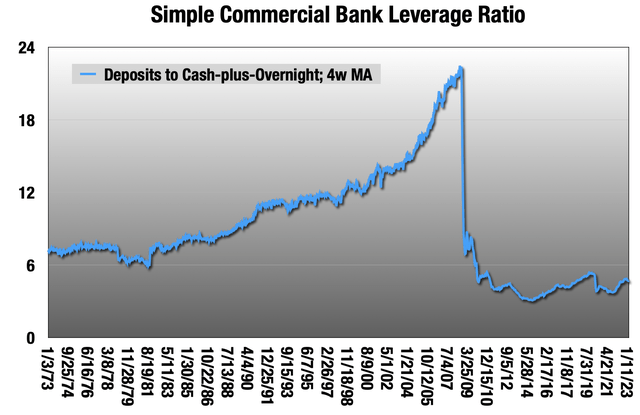
What stands out of course is the dramatic rise in leverage after 1980s banking deregulation, and then the 2009 regulations that made it sort of impossible for banks to get too leveraged. Commercial bank leverage remains below 1970s levels. Jamie Dimon of JPMorgan (JPM) likes to complain that “we have buffers on top of our buffers on top of our buffers!” I view it as a good thing; he does not.
Banks now also loan out far less of their deposits, mostly preferring much more liquid government debt securities like Treasuries and agency MBSs.
Federal Reserve weekly commercial bank balance sheets Table H.8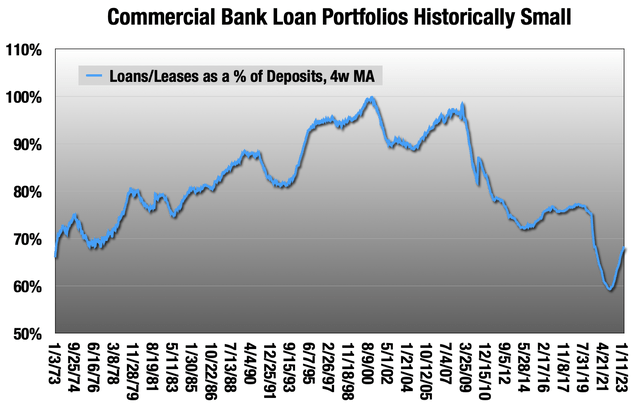
Now, Silicon Valley also had low leverage, and a low percentage of deposits loaned out, but no bank can survive a bank run. But their loss is someone else’s gain.
So right now, I think a financial ETF like XLF (XLF) is a solid short-term play for a quick 5%-10%. I bought a little on Friday, and will likely add more.
My weekend task is going through the 119 US banks down 10% or more this week. It’s raining again in LA, so what the heck? If I find anything interesting, I will be reporting back to Long View Capital members this week.
Editor’s Note: This article covers one or more microcap stocks. Please be aware of the risks associated with these stocks.







































